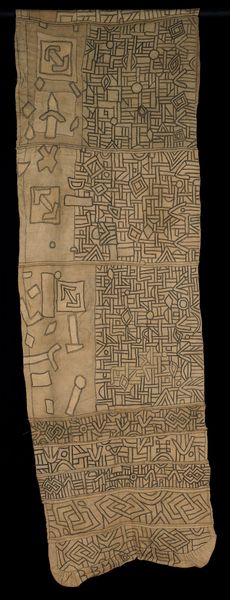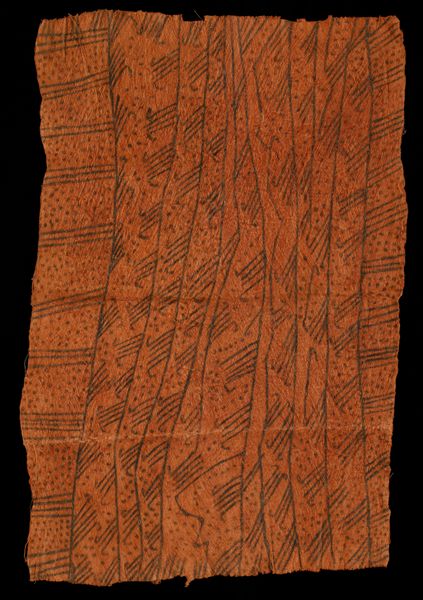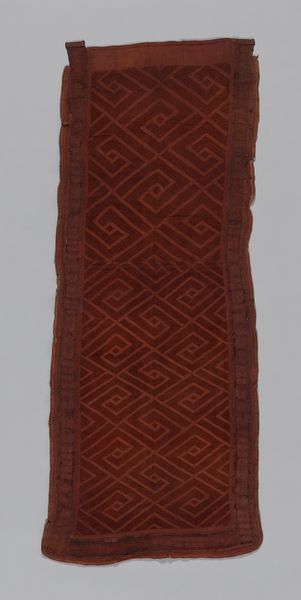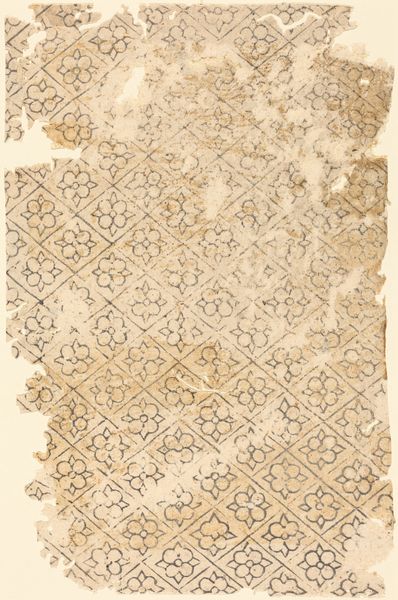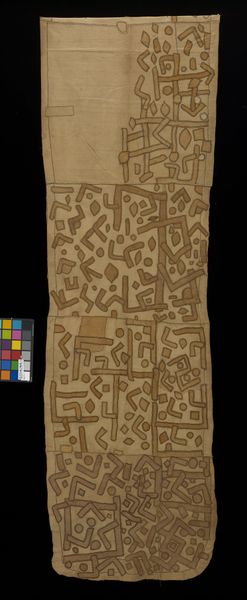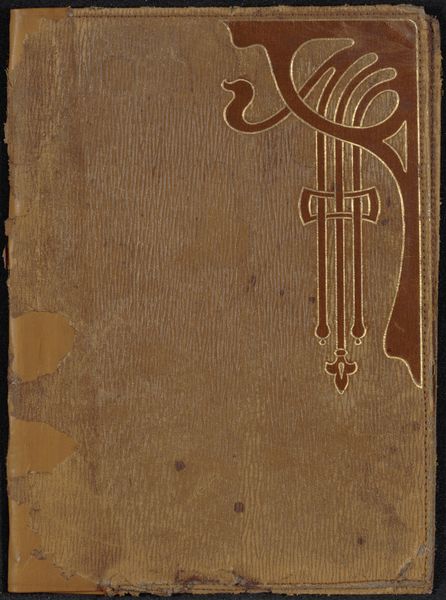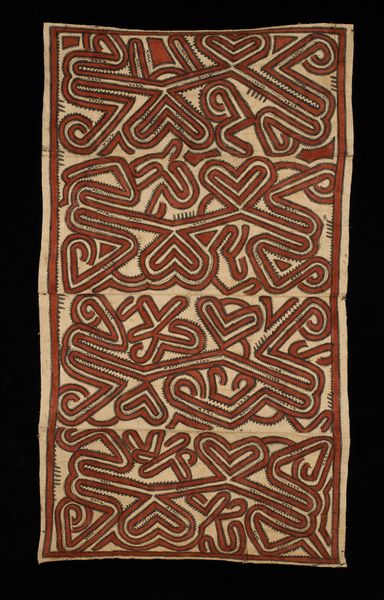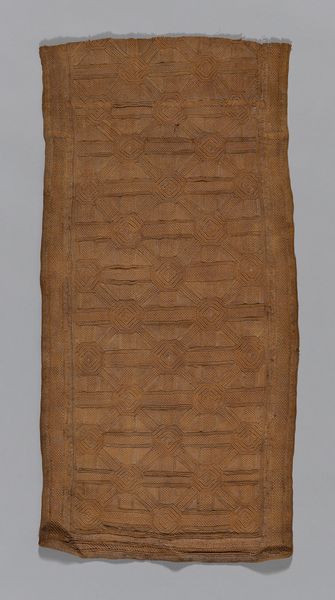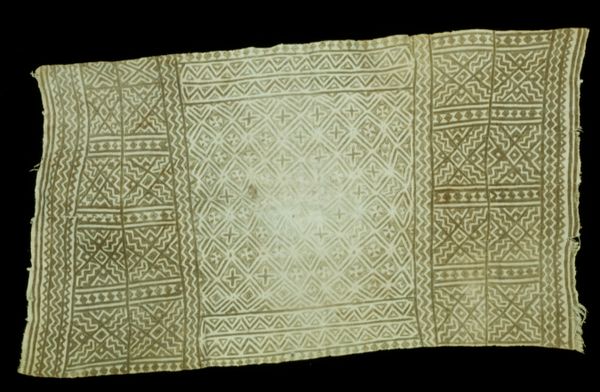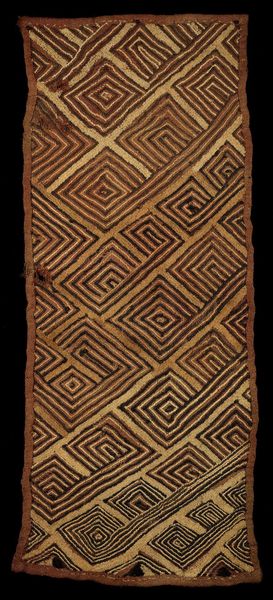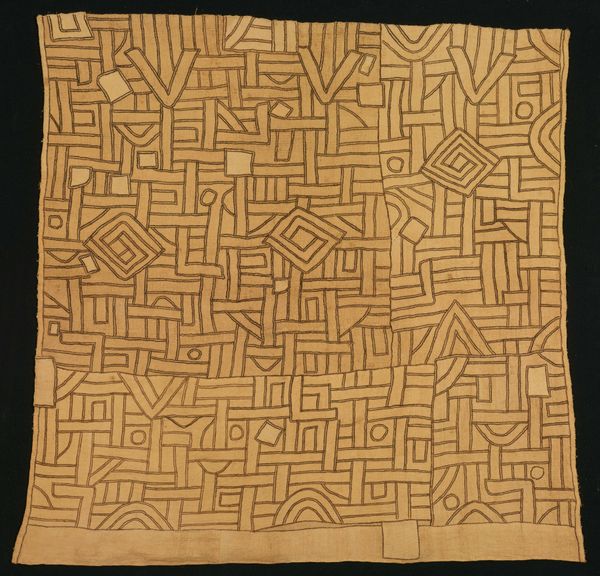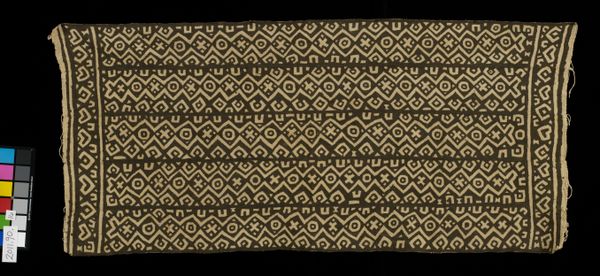
textile
#
african-art
#
textile
#
geometric pattern
#
geometric
Dimensions: 51 1/2 x 27 1/2 in. (130.81 x 69.85 cm)
Copyright: Public Domain
Curator: At first glance, the panel radiates a kind of serene complexity; its neutral palette and dense geometry evoke a sense of ritual and tradition, almost like an ancient map. Editor: Agreed, it feels deeply rooted. We're looking at a "Panel" by a Kuba artist, made around the 20th century. This textile work is a collage incorporating a diverse collection of materials, reflecting both sophisticated design principles and cultural narratives inherent in African art traditions, but what materials jump out for you? Curator: Immediately the edges look distinct, trimmed with an applique of sorts, and a clear distinction in weaving density from the internal square. The patterns themselves show deliberate repetition which gives it visual weight. How do these motifs communicate beyond aesthetics? Editor: Kuba textiles, especially those with geometric patterns, were powerful social markers. Designs signified status, lineage, even the progression of life events, for both men and women. As a form of Pattern and Decoration, this piece goes beyond simple embellishment, embedding socio-political meanings in the weave itself, a bold counter-narrative against Western canon's long denial of "craft's" symbolic potential. Curator: Exactly, to view it solely through a Western lens, divorcing it from its intricate coding of identity and experience, is to profoundly misunderstand its power. The texture hints at the intense, skilled labor involved, further amplified in its connection to collective Kuba identity and history, as woven through this textile. The labor, both literal and symbolic, is truly remarkable here. Editor: Definitely, thinking about the labor and skills required to create these intricate patterns also underscores the value placed on the textile and on the individual artists. This piece challenges the distinction between “high” art and "craft", showing sophisticated design embedded in utilitarian and decorative objects. Curator: Thinking about the intersections between art history, feminist theory, and cultural studies, it is vital to deconstruct Western art-world biases which have marginalized such works for too long. Here we see material culture serving as an archive of communal memory and political statement. Editor: Ultimately, viewing art with sensitivity to labor, resources, and political meaning helps us avoid aesthetic colonialism. It shows art history is as much about *making* things and challenging power.
Comments
No comments
Be the first to comment and join the conversation on the ultimate creative platform.
